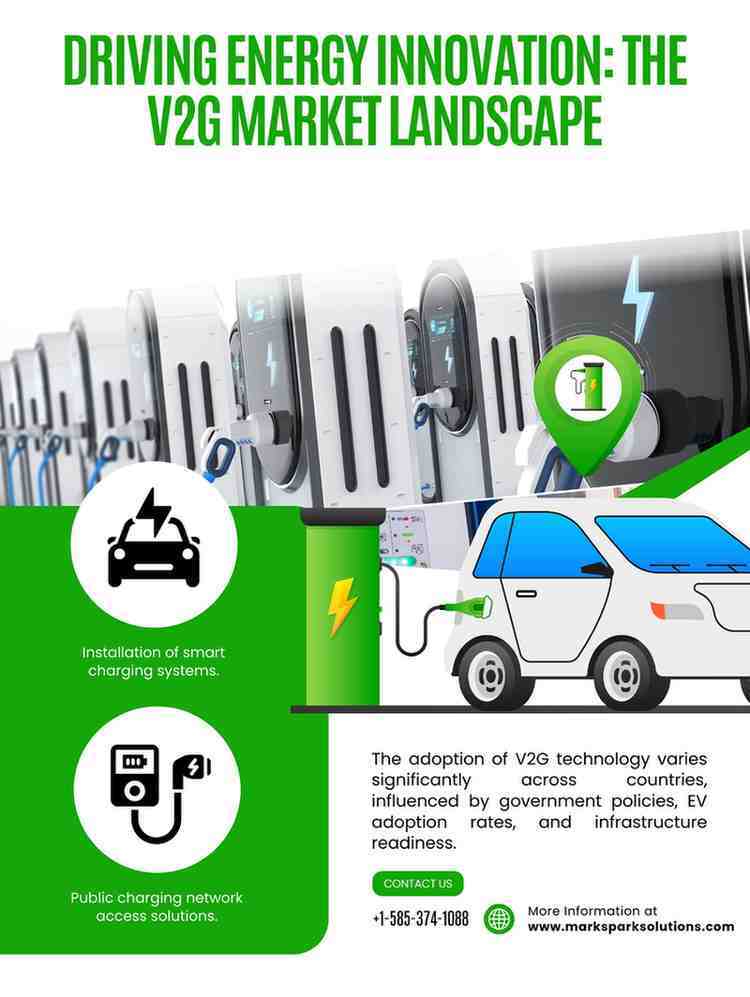Revolutionizing Energy Management: The V2G Approach

As the world transitions towards sustainable energy solutions, the Vehicle-to-Grid (V2G) technology has emerged as a groundbreaking innovation that promises to reshape the relationship between electric vehicles (EVs) and the energy grid. By allowing EVs to not only draw energy from the grid but also return it during peak demand, V2G systems can enhance energy stability, reduce costs, and significantly lower greenhouse gas emissions. This blog delves into the V2G market, discussing the technology required, presenting relevant statistics, breaking down costs, and highlighting key players across various countries.
Technology Need for V2G
The V2G technology operates on a simple yet innovative principle: electric vehicles can feed electricity back into the grid. For this to happen effectively, several technological components are necessary:
- Bidirectional Chargers: Unlike standard chargers that only allow energy to flow one way, bidirectional chargers facilitate the flow of electricity in both directions. These chargers are crucial for enabling vehicles to discharge energy back to the grid.
- Smart Grid Infrastructure: A robust smart grid is essential for V2G operations. This includes advanced metering systems, communication technologies, and software that can manage the flow of electricity between vehicles and the grid, ensuring efficiency and reliability.
- Vehicle Management Systems: Software applications that monitor vehicle battery status, energy consumption, and grid demands are vital. These systems ensure that EV owners can optimize their energy usage and receive compensation for the energy fed back to the grid.
- Regulatory Framework: Government policies and incentives play a significant role in promoting V2G technology. Supportive regulations can accelerate the adoption of V2G solutions by providing financial incentives for both consumers and utility companies.
Key Statistics
|
Statistic |
Value |
|
Global V2G Market Size (2022) |
$9.6 billion |
|
Expected CAGR (2023-2030) |
31.50% |
|
Number of EVs Expected by 2030 |
125 million |
|
Peak Load Reduction Potential |
50-80 GW |
|
Average Revenue per V2G Vehicle |
$1,500 annually |
These statistics illustrate the burgeoning potential of the V2G market, driven by the increasing adoption of electric vehicles and the demand for sustainable energy solutions.
Vehicle To Grid Technology Cost Breakdown
Implementing V2G technology involves various costs that can impact its adoption. Below is a breakdown of the primary cost components associated with V2G systems:
|
Cost Component |
Estimated Cost |
|
Bidirectional Chargers |
$2,000 - $5,000 per unit |
|
Smart Grid Upgrades |
$5 billion (estimated for major cities) |
|
Vehicle Management Software |
$500 - $2,000 per vehicle |
|
Installation Costs |
$1,000 - $3,000 per site |
The initial investment for bidirectional chargers and infrastructure upgrades can be substantial, but the long-term benefits, including savings on energy costs and additional revenue streams, can justify these expenditures.
For More Details Visit Our Website: Mark & Spark Solutions
Top Countries Leading in Vehicle to Grid Technology Market
The adoption of V2G technology varies significantly across countries, influenced by government policies, EV adoption rates, and infrastructure readiness. Below is a table highlighting the top countries in the V2G market:
|
Country |
Market Size (2022) |
EV Adoption Rate |
Government Initiatives |
|
United States |
$3 billion |
6.40% |
Federal tax credits, state incentives |
|
China |
$2.5 billion |
13.50% |
Subsidies for EV purchases, V2G pilot programs |
|
Germany |
$1.5 billion |
10.50% |
National electrification strategy |
|
Japan |
$1 billion |
8.00% |
Strong support for renewable energy integration |
|
Netherlands |
$800 million |
20% |
Comprehensive V2G framework and incentives |
Conclusion
The Vehicle-to-Grid (V2G) market represents a significant advancement in both the energy and mobility sectors, offering a more sustainable and efficient future. As countries increasingly adopt electric vehicles and seek innovative solutions to manage energy consumption, V2G technology will play a crucial role in the transition to a cleaner, more resilient energy grid.
Although there are challenges related to initial costs and infrastructure development, the long-term benefits of V2G—such as improved grid stability, reduced energy costs, and lower greenhouse gas emissions—make it an attractive option for governments, utilities, and consumers. With supportive policies and ongoing technological advancements, the V2G market is set for significant growth in the coming years, ultimately leading to a cleaner and more sustainable energy landscape.